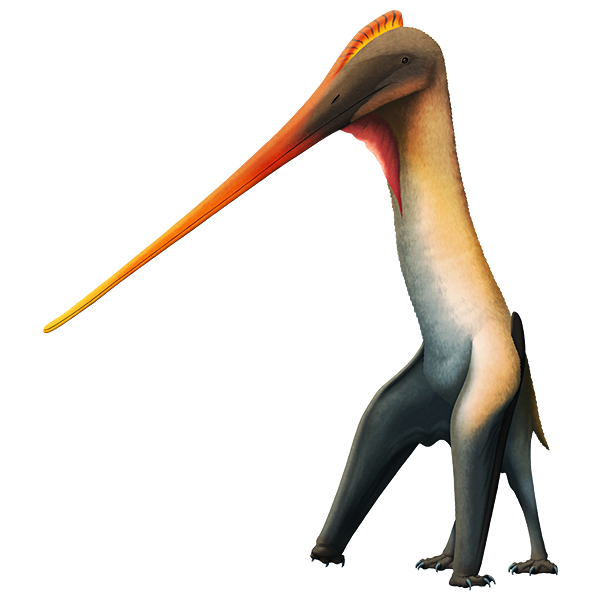Leptostomia begaaensis here is a recently-discovered pterosaur that lived during the mid-Cretaceous period, around 100 million years ago.
Its fossil remains were found in the Kem Kem beds of Morocco – ancient river deposits famous for yielding some of the newer specimens of the bizarre aquatic dinosaur Spinosaurus – and consist of just a couple of small pieces of jaw bones.
But those fragments are rather weird for a pterosaur.
While it’s hard to tell for certain from such meagre remains, Leptostomia might have been part of the azhdarchoid lineage, related to both the elaborately-crested tapejarids and the terrestrial-stalking giants like Quetzalcoatlus. And if it was indded an azhdarchoid it was an especially tiny one, possibly the smallest known member of the whole group. Based on the proportions of its relatives it would have stood just 30cm tall (1′) with a wingspan of 60-70cm (2′-2’4″), roughly comparable in size to a modern pigeon.
And it had an incredibly long beak that tapered to a thin delicate tip, resembling the beaks of modern probe-feeding shorebirds more than any other known pterosaur. It may have been specialized for the same sort of ecological niche, poking around in mud and shallow water for small invertebrates and snapping them up, possibly detecting its hidden prey using super-sensitive nerve endings in the tip of its beak.

